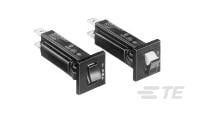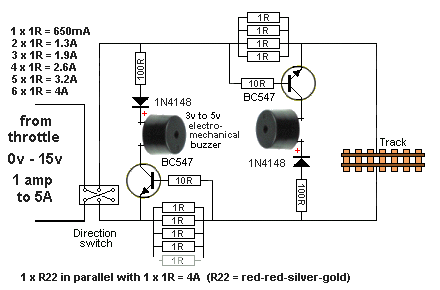Originally Posted by willhi895:
Nice video!
These TE breakers, at say 135% of breaker current load the tripping time will be 1 hour.
The idea is that if we approach or slightly go over our TE circuit breaker limit (or PTC fuse limit in some cases) then we would get a warning and back off a little. Then the breakers are not sitting there getting hot for an hour before they trip, or 10 minutes, or any length of time.
So that's the WHY. Does that make sense are am I just being stupid?
Also we are running a ZW on a pretty small 11'x12' layout so will probably not ever push the ZW unless there is a major short.
Not holding us up from getting wired up by any means but just thought it would be fun to do and show my son how warnings can be built into electronics when ranges are exceeded. Fun except for the price that is. I know you see RPM and under-over voltage warnings things like that in industry all the time on dangerous equipment. However, I'm finding that to teach my son something better than I learned it is not easy for some reason. If only those panel meters were $30 we would be using them.
Thanks, Tommy Z definitely knows how to run trains!
The 1 hour at 135% is what steered me away from the TE breakers. Some folks on here swear by them so I got some to test (I think I got a different brand, but same specs, will have to check on what I have?) and they actually tripped a lot faster than that with a short on the track. These breakers are fine for postwar trains. Newer trains with modern electronics maybe not so much, at least not for me. I don't want to risk a $500 engine with a $5-$10 breaker when I can have a much better electronic breaker for $50 that has spike protection as well. If you have a postwar ZW and modern engines, get the PSX-AC's that cjack referenced above. They are electronic and have spike protection as well. I use them myself with the PH-180's for power. I have command control only, all modern electronic engines.
The Lionel PowerHouse-180's that GRJ mentions also have excellent breakers and are very fast acting. Similar in reaction time to the PSX-AC's. If you have a ZW-L then you already have excellent breakers and protection for your trains. You could still add the PSX-ACs, but I am not sure that would really be needed? That's another subject for the electronic folks to comment on. That's above my level of electronic know how.
You can also get some cheap volt and amp meters on ebay to monitor your power usage. Like the ones you referenced in your first post, only the economy version. These can be purchase from the Asian suppliers on ebay for prices starting at around $6-$7 for analog and about $6-$20 or so for digital and ammeter with shunt. I would recommend the analog ones for just monitoring, the digital ones are a little more complicated to wire up. They require an isolated power supply. GRJ assisted me with my second round with the digital meters. Don't ask what happened to the first set.  If you are interested I can post some links for some of these.
If you are interested I can post some links for some of these.
Originally Posted by Happy Pappy:
Originally Posted by rtr12:
Happy Pappy,
Here's an example of what GGG was talking about with some folks pushing the limits.
rtr12,
Wow!!..OK It's basically doing the same thing I did years ago? I always had a certain level of power in reserve. The video is a good example of something I find confusing. I'm sorry, it happens a lot these days. But, Thank you!
But, Thank you!
You're welcome, glad you liked it. I think he said he was putting 30 amps to the track on that video. Don't remember if this video was one of them, but he has overloaded some of the equipment pretty bad a time or two. He has some more really neat videos like that one on his youtube channel. He also has an extremely nice layout, at least I would love to have one like it, but I am not sure I would have the nerve to try some of the things he does wit his trains. He has a LOT of nice trains too. He is also a forum member here and still posts occasionally. You may know him?
His youtube channel was one I found when I was thinking about getting back into the hobby. Needless to say I was impressed and it affected my decision as I am now back in for the long haul. There were others as well, ericstrains youtube channel was another, as was the command control systems, MTH, Lionel, Atlas and others.














